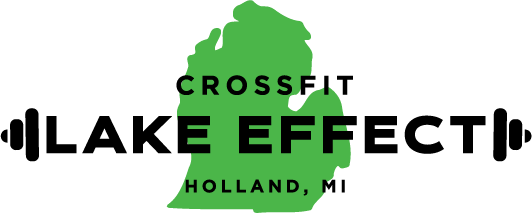OVERCOMING ISOMETRICS: MYELINATION TO REACH MAXIMUM POTENTIAL
Coaching athletes to be stronger and more powerful can be a very simple, but demanding process. There are many routes a strength and conditioning coach can take when programming for athletes, and most of them will work pretty well as long as the athlete works hard and consistently. However, there are many factors that affect the rate at which improvements are seen in the weight room and on the field. This can be the difference between a good strength and conditioning program and a great one.
A coach may work with an athlete for 4-5 years, assuming he or she is at the same school for that amount of time. During that time, the athlete may have 5-10 off-seasons, depending on the sport, where real & deep adaptations can be made to his or her musculature, biomechanics, and central nervous system. This is not to say that pre-season and in-season training sessions are useless, but because they must be tailored more specifically to sport performance and readiness, fewer deep habits and adaptations can be engrained or changed.
Assuming the athlete doesn’t get injured and is able to train during this whole off-season, it is commonplace for the athlete to spend 3-5 days per week with the strength coach, depending on the sport and the athlete’s needs/goals, with each session ranging from 30-75min. In the grand scheme of things, this is not a lot of time, even in an optimal scenario, so the strength coach must be efficient in his programming. Unfortunately, the time spent outside the weight room can be filled with bad sleeping/eating habits, poor time and stress management, and a host of other variables that can prove difficult to control and can negatively affect training and adaptation, and the coach must do his or her best to educate and encourage the athlete to make the right choices in these situations. However, the coach has total control of what happens in his or her training sessions, so using that time efficiently and effectively is of the upmost importance, as it plays a major role in providing an optimal base for the athlete to train off of, as well as setting the athlete up to peak for their competitive season.
After working at the University of Minnesota this summer under Cal Dietz, I realized many coaches overlook General Physical Preparedness (GPP) and the many benefits it can provide for future development in strength and power. When GPP comes to mind for most, high volume “bodybuilding-esque” programming is the prescription. This does, for the most part, fit the mold for the time of year, because the objective is to improve local muscle endurance properties, increase muscle cross sectional area, and build connective tissue. However, there are several steps a coach needs to take before this phase that will make the subsequent cycles more effecting.
First, the coach needs to program a brief cycle that focuses on building an aerobic base for his or her athletes, and it can be accomplished using many different protocols that I will expand upon in the future. Once this has been accomplished, with whatever approach you think best suites your athletes, a brief 2 week phase dedicated to the myelination of the axon is essential for maximizing nervous system development and priming the body for future strength and power gains.
Regarding the myelination process: in our bodies electrical signals travel from one nerve cell in the body to another (for example from one nerve cell body to a muscle) on axons. The rate at which these electrical signals travel is dependent upon the level at which the axon is coated with myelin. Myelin speeds up the transmission of these electrical signals to the muscles by insulating the axon and reducing loss in electrical charge (higher the charge the larger the potential for the action). The objective of myelination is to increase the nervous systems efficiency by improving the speed at which signals are sent and limiting energy loss.
The purpose of implementing a phase dedicated strictly to myelination is to improve motor unit recruitment, which will improve activation of the muscle needed to perform the desired movement while, at the same time, deactivating the fibers that work against the desired outcome of the exercise. It is simply teaching the brain which motor units to fire to produce the desired movement. In the weight room, it will help develop gross motor skills which recruit large muscle groups for multi-joint movements. Developing these multi-joint movements or “big lifts” (squat, deadlift, bench press, etc.) in the offseason will transfer to stronger, faster, more powerful athletes on the field during competition.
OVERCOMING ISOMETRICS
One of the more effective ways to program a myelination phase is through using Overcoming Isometrics (OI) variations of the big lifts. An OI is different from your typical isometric, also known as yielding isometric, when the athlete performs a pause at some point during a movement (like performing a brief pause at the bottom of a squat). OI exercises involve pushing or pulling against an immoveable resistance or object. During the exercise there will be no external movement, however the intent will be to move the resistance. An example would be pressing or pulling a bar against pins on a rack. There are many reasons why OIs are preferred to yielding isometrics during a myelination phase.
During a study it was found that during maximal OI muscle actions there are higher levels of muscle activation (95.2%) than during maximal eccentric (88.3%) and maximal concentric (89.7%) muscle actions. These findings state that an individual can recruit nearly all motor units during a maximal isometric contraction only, which improves neural drive and greatly increases their peak potential for strength and power (1).
Another study found that after a phase of training using only OIs that when performing maximal knee extensions, the co-activation of the hamstring decreased by 20%. This reduction in hamstring coactivity is very important because it will provide less opposing force to the contracting quadriceps. Meaning the implementation of OIs will limit the opposing force of the antagonist muscle resulting in a more powerful contraction of the agonist muscle (2).
Lastly, a third study found that the average muscle cross-sectional increase was much greater for those performing OIs (12.4%) versus those performing yielding isometrics at 60% (5.3%). The author of the study attributed the gains in muscle size to the higher levels of metabolic demand (3).
EXERCISE PROTOCOL
Length of Phase:
· A two-week phase is optimal because it allows for the athlete to be shocked by the stress of the new stimuli during the first week and then during week two gives that athlete an opportunity to adapt to the stressful stimuli it was presented with the week prior.
· Due to the high level of stress of overcoming isometrics there isn’t any reason to run a three week cycle because, after all, the objective of it is to potentiate future strength and power gains not cause them necessarily.
· If competition season is near, a 1-week phase will be adequate for improving neural drive since time is an issue, but not to the same degree as a 2 week phase will.
Training Frequency:
· 2-3 days per week due to high level of neural demand and the stress placed on the body. It is smarter to start athletes with a lower training age at 2 days per week, since the intensity of the session is so high.
Exercise Selection:
· Choose one exercise for each major muscle group you are trying to potentiate for future strength and power gains, ideally choose exercises you plan on focusing on in future phases. Typically this will equate to a total of 6-9 exercises.
· Typically, the exercises done during this phase each week are very similar due to the minimal options OI’s offer and the benefits of performing major multi-joint exercises.
· The larger the variety of exercise chosen the higher the level of general physical preparedness the athlete will have.
Intensity
· All overcoming isometrics performed in a Myelination Phase will be performed with maximum intent, so intensity is 100%. The athlete should perform each exercise as if they are trying to “lift the rack”.
Volume
· Athletes will perform 3 sets of each exercise for a time of 10 seconds.
· This time domain was chosen because we want to focus solely on training within the alactic energy system (0-10 sec). When the athlete trains beyond 10 sec in a set they move into the lactic energy system, which causes more fatigue buildup, and drastically limits the amount of force the athlete can produce.
Rest
· Athletes will rest 30-50 seconds between different exercises during a tri-set, which will equate to roughly 2 minutes between doing the same exercise in the tri-set a second time.
· Rest intervals are based off Ultimate MMA Conditioning by: Joel Jameson, Prescription for Alactic Power and Capacity training. The minimal rest between the different exercises develops total body alactic capacity, while at the same time alactic power is being developed because a 2 minutes rest will take place before performing an exercise twice due to the tri-set method.
EXAMPLE TRAINING DAY
1a. BB Single Leg Deadlift Pin Pull: 3x10 sec each leg
1b. BB Shoulder Pin Press: 3x10 sec
1c. BB Calf Raise Pin Press: 3x10 sec
2a. BB Bench Pin Press: 3x10 sec
2b. BB RDL: 3x10 sec
2c. OH grip BB Bench Row: 3x10 sec
3a. BB Pin Hip Thrust: 3x10 sec
3b. Overloaded Band Dip: 3x10 sec
3c. Overloaded Band Neutral Grip Pullup: 3x10 sec
SOURCES
1. Activation Of Human Quadricep Femoris During Isometric, Concentric, and Eccentric Contractions
Nicolas Babault-Michel Pousson-Yves Ballay-Jacques Hoecke – Journal Of Applied Physiology – 2001
2. Adaptations in Coactivation After Isometric Resistance Training
B. Carolan-E. Cafarelli – Journal Of Applied Physiology – 1992
3. Effects Of Resistance and Stretching Training Programmes on the Viscoelastic Properties Of
Human Tendon Structures in Vivo
Keitaro Kubo-Hiroaki Kanehisa Fukunga – The Journal Of Physiology - 2002





